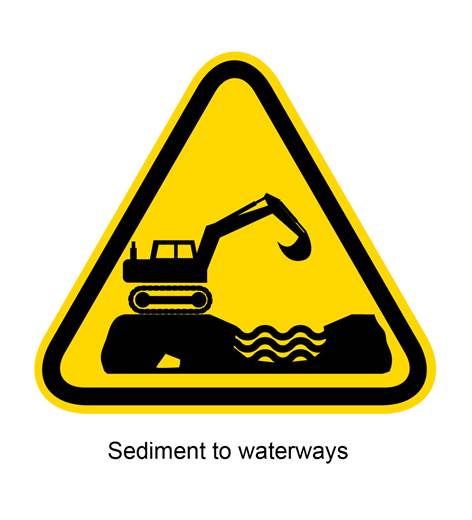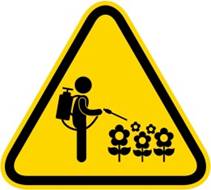Information
-
Site address
-
Conducted on
-
Prepared by
-
Please note: Your use of the ESC Audit Report produced using this ESC Checklist is subject to the Disclaimer set out on the first page of the ESC Audit Report.
Minimise erosion
1. Soil Cover
-
1.1 Has all exposed soil around the site been covered to minimise erosion?
-
1.2 Is soil cover adequate and does not require maintenance?
-
Get the Factsheet here
http://healthywaterways.org/initiatives/esc/soil-cover
2. Kerb to Lot Groundcover
-
2.1 Is the road verge fully covered by turf or other groundcover?
-
2.2 Are vehicles and materials being kept off the verge groundcover?
-
2.3 Is the verge groundcover adequate and does not require maintenance?
-
Get the Factsheet here
http://healthywaterways.org/initiatives/esc/kerb-to-lot
3. Stockpile Protection
-
TIP: Use tarps or other waterproof covers to protect erodible stockpiles such as loam and loose soil.
-
3.1 Are erodible stockpiles securely covered if not in use? (e.g. Brickies loam)
-
3.2 Are these stockpiles located behind an appropriate sediment barrier?
-
3.3 Are stockpiles adequately protected and do not require maintenance?
-
Get the Factsheet here
http://healthywaterways.org/initiatives/esc/stockpile-protection
Manage stormwater flows
4. Run-off from Adjacent Sites
-
4.1 Is significant stormwater run-off from adjacent lots likely to enter your site (i.e. an area greater than 1,500m2 or 3 house lots)?
-
TIP: Consider installing a drainage diversion on-site to help prevent erosion and sediment problems on your site.
-
4.2 Are drainage diversions adequate and do not require maintenance?
-
Get the Factsheet here
http://healthywaterways.org/initiatives/esc/downpipes
5. Downpipe Connections
-
5.1 Has the roof been laid?
-
5.2 Are all temporary or permanent downpipes appropriately connected to the stormwater system?
-
5.3 Are the downpipes free of kinks and rips, and securely connected at each end of the downpipe?
-
5.4 Are all downpipes fully operational and do not require maintenance?
-
Get the Factsheet here
http://healthywaterways.org/initiatives/esc/downpipes
Capture sediment
6. Entry/Exit Rock Pad
-
6.1 Has a stabilised entry/exit pad been installed to the correct specifications?
-
6.2 Has loose soil been prevented from being tracked onto the road?
-
TIP: Restrict site access until the rock pad is refreshed or replaced. Sweep the road clean - do not wash sediment down the drain!
-
Get the Factsheet here
http://healthywaterways.org/initiatives/esc/entry-exit
7. Coarse Sediment Barriers
-
TIP: The better you control onsite erosion, the less you need to rely on sediment barriers.
-
7.1 Have effective sediment barriers been installed on-site and to the correct specifications?
-
TIP: If you have adequately covered and maintained all exposed soil to minimise erosion then you may be able to reduce your sediment barrier requirements on-site. If in doubt contact your local council, or install effective sediment barriers to minimise risk.
-
7.2 Are the sediment barriers free of excessive sediment build-up, rips or gaps that could let sediment through?
-
7.3 Are all sediment barriers fully operational and do not require maintenance?
-
Get the Factsheet here
http://healthywaterways.org/initiatives/esc/coarse-sediment-barriers
8. Stormwater Inlet Protection
-
8.1 Are all on-site stormwater inlets adequately protected against sediment entry?
-
8.2 The on-site stormwater inlets do not require sediment removal or maintenance?
-
Get the Factsheet here
http://healthywaterways.org/initiatives/esc/stormwater-inlet
9. Road and Verge Maintenance
-
9.1 Is the road and verge outside my site clean of loose soil and sediment?
-
NOTE: All soil and sediment should be removed as soon as possible, and by the end of the working day and before any rain.
-
9.2 Sediment controls are only installed in the roadside gutter or at stormwater inlets with the local council's approval?
-
TIP: Focus on stopping sediment from leaving the site in the first place. Sediment controls in the roadside gutter and at stormwater inlets can become a safety hazard and increase the risk of localised flooding.
-
Get further information here
http://healthywaterways.org/initiatives/esc/house-sites
Other important checks
10. Run-off from Concreting Work
-
TIP: The cement in concrete produces water with a high pH, and acids produce a low pH. Too much of either can pollute waterways.
-
10.1 Are the controls adequate to prevent concrete slurry and wastewater from entering stormwater inlets? (e.g. from exposed aggregate, acid washing)
-
10.2 Has all concrete waste material been cleaned from the road and gutter?
-
Get the Factsheet here
http://healthywaterways.org/initiatives/esc/capture-cement-runoff
11. Other 'Wet Trades'
-
Has wastewater from other 'wet trades' (e.g. painting, plastering) been prevented from entering stormwater inlets or flowing off-site?
-
Get the Factsheet here
http://healthywaterways.org/initiatives/esc/capture-cement-runoff
12. Waste Skip / Cage
-
12.1 Is there a waste skip or cage located on-site?
-
12.2 Is all building waste, food and drink containers that could wash or blow off-site going into a skip bin or cage?
-
Get the Factsheet here
http://healthywaterways.org/initiatives/esc/waste-management
13. Onsite Education
-
13.1 Have all staff, trades and suppliers been made aware of the pollution prevention requirements on this site and the consequences if they breach these requirements?
-
Get further information here
http://healthywaterways.org/initiatives/esc/house-sites
14. Site Handover to Client
-
14.1 Have all areas of exposed soil been covered at the time of handover to the client? Select 'N/A' if site is not yet at handover stage.
-
14.2 Has the client been advised in writing of their obligations to have adequate ESC measures in place?
Inspection Notes
-
Record any important notes from your inspection below
-
Add any images if necessary
-
Add signature












